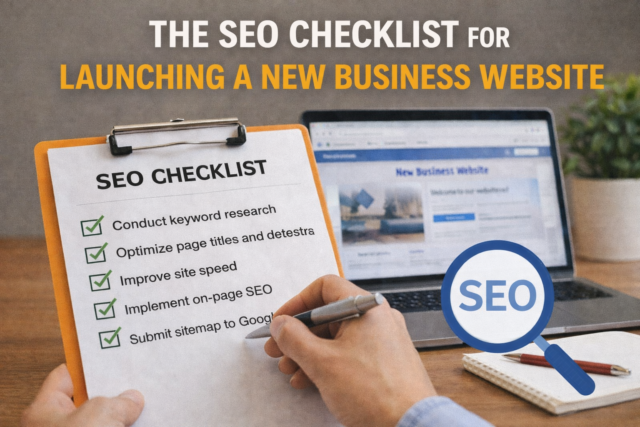Understanding customer behavior is at the core of marketing. That’s why psychology can provide marketers with a way to leverage human behavior and emotions to create effective marketing strategies. They can also change behavior or allow the organization to ensure that a desired behavior continues. This can help drive engagement, cultivate a brand identity, and encourage brand loyalty. Marketers are not just focused on the ‘how’ and the ‘what,’ but getting to the bottom of the ‘why’ to attract, influence, and engage with consumers.
Employing tactics and understanding your customers’ problems or issues is essential. So you can provide solutions and remain at the top of your mind when they face those particular challenges. This article will explore how to use psychology effectively in marketing and provide cases where it has been successfully applied.
How Can Marketers Use Psychology in Effective Marketing Strategies?
Behavioral psychology helps marketers understand why people do the things they do. By examining behavior, you can help influence consumers to engage or purchase, enhancing your marketing campaigns.
To put yourself in the customer’s shoes and implement tactics that use the power of persuasion, you need to understand psychological principles or theories. These principles can personalize content, streamline the customer journey, or optimize the user experience.
Social Proof
Social proof refers to people’s tendency to conform to the actions and opinions of others, especially when they are unsure about the appropriate behavior or decision to make. It is a common aspect of being human to look to others for acceptance and validation. In marketing, social proof is often used to demonstrate that a product, service, or brand is popular and widely accepted by others, making it more appealing.
One effective way to leverage social proof is through social media, including social elements on your website or blog, such as follow buttons or social sharing options. Testimonials are another powerful example, showcasing customer advocates and enabling consumers to gain insights from other people’s experiences. Testimonials also serve as markers of trust, helping to boost conversion rates.

Choice Architecture
In today’s digitally distracted world with information overload, choice architecture involves breaking things down into simple terms and offering limited choices. Research suggests that the optimum number of options is three. For example, on a website, presenting three different products above the fold (the top of a web page visible without scrolling) keeps things clear and simple, making it easier for consumers to understand the features and benefits of those products.
Anchoring
Anchoring involves presenting the most expensive item on a website or product list. This tactic is valuable for promoting mid-priced products. Shoppers may perceive the most expensive option as too costly and the cheapest as inferior, leading them to choose the mid-priced product. For example, if you’re selling cameras at different prices, you should list the most expensive first. So if the cameras cost $200, $500, and $800, the first product should be $800, then $500, and finally $200.
This is especially valuable for moving the mid-priced product. Some shoppers would think that the $800 camera is too expensive and that the $200 must be inferior as it is one-fourth the price of the most costly model. This leaves the shopper thinking that the $500 product is their best option. This is called the Centre-stage Effect. Subscription-based businesses, like phone companies, often use this tactic to show savings on deals or offers.
Scarcity
Scarcity leverages the idea that consumers place higher value on items that appear scarce or difficult to acquire. This creates a sense of urgency, prompting quick action to obtain the product or service. Airlines and accommodation sites like Booking.com effectively use this principle with messages like “only three left at this price.” An example is Naked Wines, which buys wine directly from independent vineyards, tapping into the scarcity principle by offering exclusive wines unavailable in supermarkets.
Loss Aversion
Loss aversion focuses on customers’ motivation to avoid loss, often more than their motivation to make gains. Behavioral psychology suggests people would rather not lose $10 than win $10. Amazon effectively uses this tactic with lightning or 24-hour sales, creating a sense of urgency that boosts conversion rates.
Partial Ownership
Partial ownership is the concept of feeling partial ownership in a product or service due to investment in it. When people think they have invested in something, it becomes harder for them to reverse out of it. Brands can develop an emotional connection with their audience through trials, free returns, test drives, and involving customers in product creation or naming competitions. This principle works by getting people attached to something, making it harder for them to reverse out of it.
Framing
Framing involves creating an emotional hook by presenting information in a way that influences decision-making. Cognitive bias leads people to make decisions based on how information is presented. Positive framing emphasizes gains or benefits, while negative framing emphasizes losses or missed opportunities. Marketers can frame messages to provide solutions to customers’ pain points in a way that evokes the desired emotions.
Borrowed Equity in Effective Marketing Strategies
Borrowed equity leverages the reputation or equity of an existing brand, entity, institution, or individual to enhance your brand’s perceived value and appeal. By aligning your brand with entities that resonate with your customers’ values, such as nature or sustainability. You can borrow their equity to boost your brand’s attractiveness and marketability. However, there is a risk of over-reliance, where your brand may lose its identity or suffer if the borrowed equity faces a scandal.
Technology Acceptance Model (TAM)
The Technology Acceptance Model (TAM) helps marketers understand how users come to accept and use technology. TAM suggests that perceived usefulness and ease of use determine an individual’s intention to use a system, influencing their actual usage and adoption behavior. When introducing a new product, such as a mobile app, emphasize its benefits and ease of use in your marketing materials to increase the likelihood of adoption.
Theory of Planned Behavior (TPB)
The Theory of Planned Behavior (TPB) predicts and understands how individuals’ attitudes, subjective norms, and perceived behavioral control influence their intentions and behaviors. This theory is effective in crafting marketing strategies that change consumer behavior. For example, when promoting a health supplement, highlight positive health benefits to create a favorable attitude, use endorsements to shape social norms, and provide easy-to-follow instructions to boost consumers’ confidence in using the product.
Learning and Conditioning for Effective Marketing Strategies
Classic and operant Conditioning are concepts in behavioral psychology used to shape consumer behavior and induce learning. Classic Conditioning involves creating associations between a stimulus and a response. It is a learning process in which the neutral stimulus (bell sound) becomes associated with a stimulus that naturally evokes a reaction (like food, which makes a dog drool). Marketers can use this to surround their brands with desired feelings triggered by a neutral stimulus.
For example, in hot countries, Coca-Cola displays billboards that showcase a frosty and cold-looking bottle or can of Coke. By repeatedly pairing the image of a cold Coke (the conditioned stimulus) with the state of thirst or need for refreshment (the unconditioned stimulus, which naturally evokes the desire or urge to drink – the unconditioned response).
You can apply this methodology to your checkout page or landing pages to elicit desired feelings from your visitors.
Operant Conditioning: This involves using consequences to modify behavior. Desired behaviors are strengthened by reinforcement, while undesired behaviors are weakened by punishment or the removal of reinforcement. The ultimate aim is to increase the likelihood of target behaviors occurring in the future.
For example, loyalty programs use operant conditioning principles by delivering reinforcement (the reinforcer) in the form of points or rewards (positive reinforcement) contingent upon the desired behavior of making a purchase (the target behavior).
The accumulation of points, which can be redeemed for discounts or free products, acts as a positive reinforcer, increasing the likelihood that customers will repeat their purchasing behavior. If a customer, on the other hand, does not make a purchase or doesn’t manage to do it within the right time frame, they do not receive any points or rewards (absence of reinforcement).
Conclusion: Psychology and Effective Marketing Strategies
Using psychology in marketing can be incredibly powerful for influencing consumer behavior and driving sales. Here are some simple ways to integrate psychological principles into your marketing activities and campaigns:
Know Your Audience: Create detailed personas that include your customers’ pain points and motivations.
Create Relevant and Engaging Content: Consider your customers’ needs when creating content. Use storytelling that engages and excites and framing that emphasizes benefits over features.
Be Clever with Color and Visuals: Certain colors elicit emotions, so choose wisely and use imagery that reflects your brand and humanizes it by featuring people.
Use Personalization: Leverage data to create personalized content and customer experiences that resonate with your target audience and reflect their interaction with your brand.
93% of consumers consider visual appearance to be the key deciding factor in purchasing.
Foster a Community: Engage with customers and prospects across digital channels to create a community, drive brand loyalty, and develop advocates.
Leverage Economics: Offer tiered pricing or bundles to guide customers toward certain products. Promote discounts and sales with limited-time offers to drive leads and use the anchoring effect by presenting high-priced options first to demonstrate value.
Test and Iterate: Conduct A/B testing on content and the customer journey to see what resonates. Consider a testing group on platforms like WhatsApp for quick feedback to ensure you’re on the right track and addressing your audience’s concerns.
By integrating these psychological principles into your marketing strategy, you can better understand and influence consumer behavior, ultimately driving marketing success.
Understanding how consumers think and behave can create marketing strategies that resonate more deeply. This not only increases sales but fosters brand loyalty. To leverage behavioral psychology’s power to take your digital marketing to the next level, visit Digital Maxima. Our team of experts can help you develop a data-driven strategy that taps into the psychology of your target audience and achieves your marketing goals.





